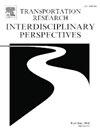ANTi-JAM solutions for smart roads: Ant-inspired traffic flow rules under CAVs environment
IF 3.9
Q2 TRANSPORTATION
Transportation Research Interdisciplinary Perspectives
Pub Date : 2025-01-01
DOI:10.1016/j.trip.2025.101331
引用次数: 0
Abstract
The behaviour of ants has inspired various scientific disciplines due to their ability to solve even complex problems. During their movement, ants generate trail networks that share many characteristics with vehicular traffic on highways. This research aims to estimate the values of traffic flow variables (mean speed, density, and flow) in ant trails without intersections or branches that could alter the dynamics of each ant. A case study in an outdoor environment was analyzed. The macroscopic traffic flow variables of interest were estimated using the deep learning method and the YOLO detection algorithm. The results show that ants adopt specific traffic strategies (platoon formation, quasi-constant speed and no overtaking maneuvers) that help avoid jam phenomena, even at high density. Emerging technologies, including smart roads, communication systems, and Cooperative and Automated Vehicles (CAVs), allow us to speculate on the use of traffic control systems inspired by ant behaviour to avoid the risk of congestion even at high traffic volumes, as demonstrated by the preliminary results of this research.
求助全文
约1分钟内获得全文
求助全文
来源期刊

Transportation Research Interdisciplinary Perspectives
Engineering-Automotive Engineering
CiteScore
12.90
自引率
0.00%
发文量
185
审稿时长
22 weeks
 求助内容:
求助内容: 应助结果提醒方式:
应助结果提醒方式:


